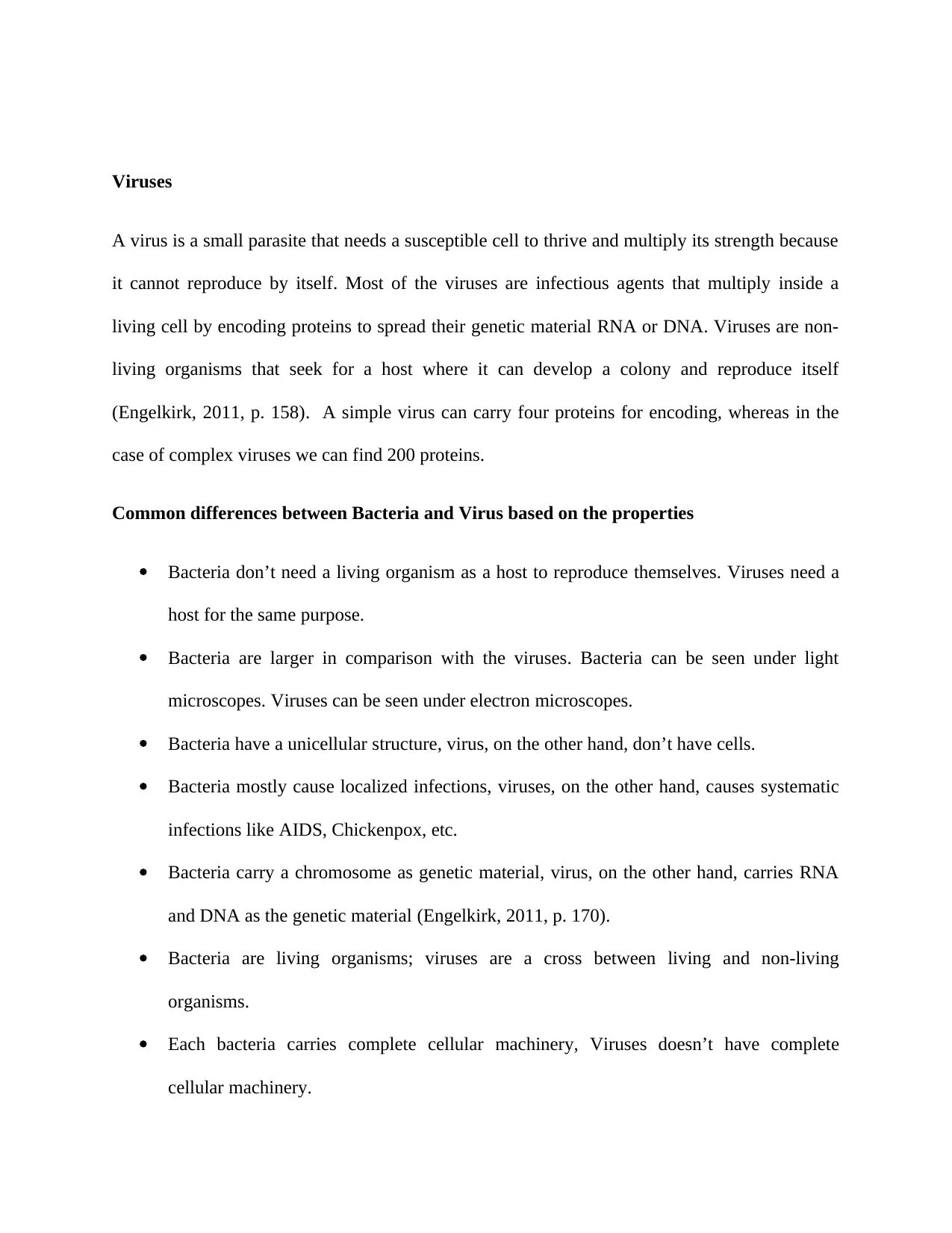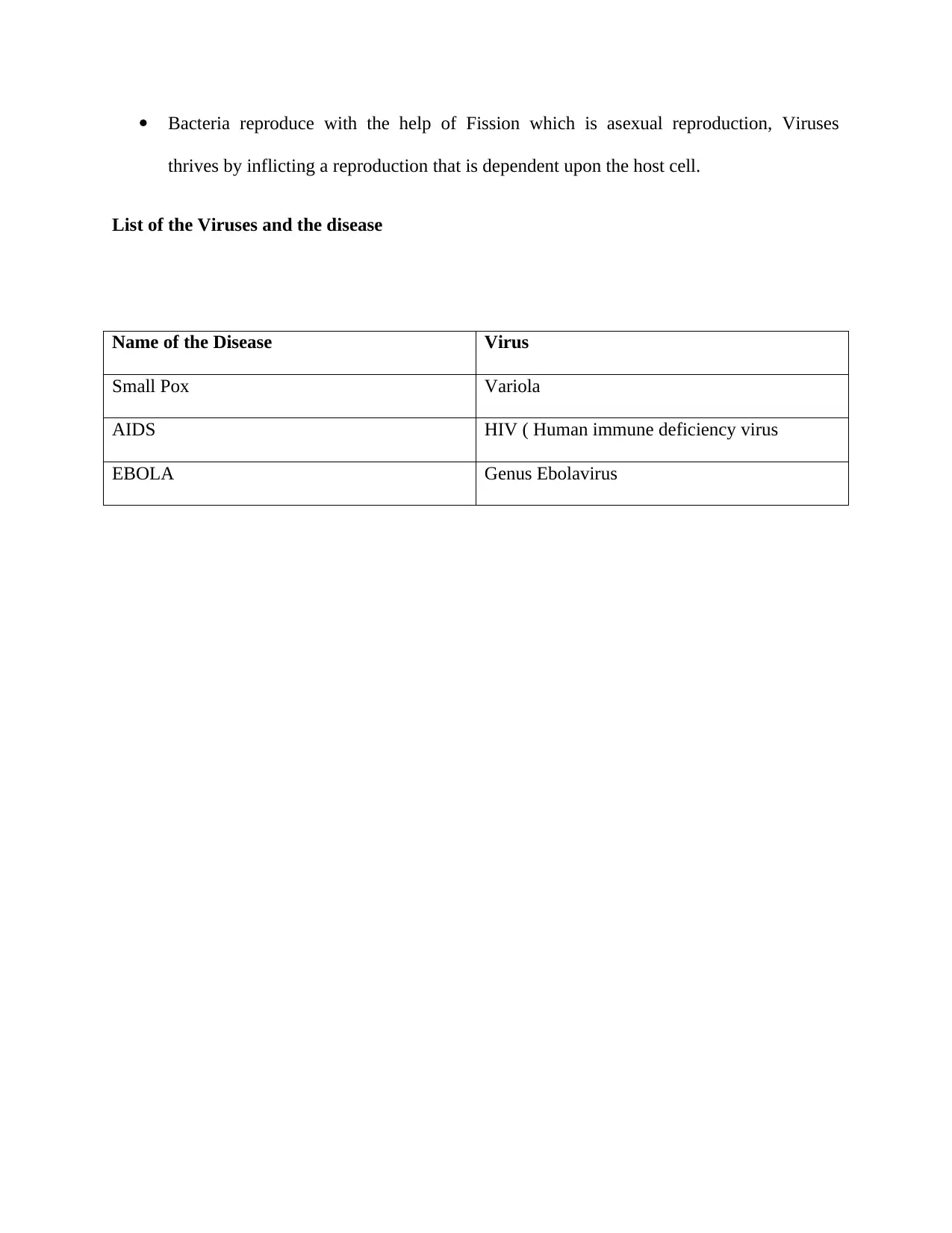Viruses: Characteristics, Properties, and Disease Association Report
VerifiedAdded on 2022/08/13
|4
|364
|30
Report
AI Summary
This report delves into the characteristics and properties of viruses, differentiating them from bacteria. It highlights that viruses require a host to reproduce, unlike bacteria. The report covers the structure and genetic material of viruses, including examples of diseases they cause, such as Small Pox and AIDS. It also provides a comparative analysis between viruses and bacteria, detailing their differences in size, cellular structure, and mode of reproduction. The report concludes with a list of viruses and the diseases they cause. This assignment is available on Desklib, a platform for students to access study resources.
1 out of 4











![[object Object]](/_next/static/media/star-bottom.7253800d.svg)